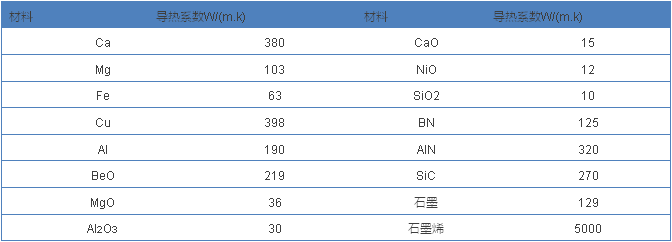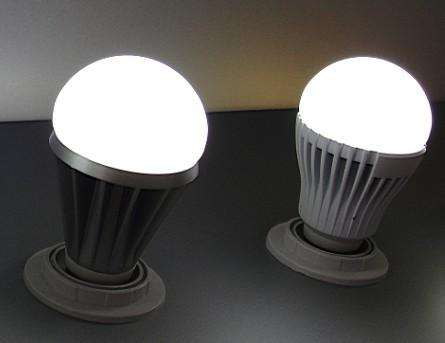The heat conductive plastic uses a heat conductive filler to uniformly fill the polymer base material to improve its thermal conductivity. It is now widely used in lighting, electronics, heating, cooling, and refrigeration enclosures. In recent years, thermal plastics have developed rapidly. So what is thermal plastic? What is its thermal conductivity? Let Xiaobian bring everyone together to find out.

First, what is thermal plastic
The thermal conductive plastic is made of general plastic or engineering plastics such as PP, aBS, PC, Pa, PPa, PBT, LCP, PPS, PEI, PEEK, etc., and the high thermal conductive composite material is added to the plastic substrate to be blended and composited, and the heat conduction is changed. The new high-performance plastics, the thermal conductivity is mainly measured by the thermal conductivity (unit: W / (mk)).
Second, commonly used matrix materials and fillers
The main components of the thermally conductive plastic include the matrix material and the filler. The matrix material includes PPS, Pa6, Pa66, Pa12, Pa46, LCP, TPE, PC, PP, PPa, PEEK, and the like.

Common plastic thermal conductivity table
Fillers include the following metals and inorganic fillers:
(1) Metal powder filler: copper powder, aluminum powder, iron powder, nickel powder, etc.;
(2) Metal oxides: aluminum oxide, cerium oxide, magnesium oxide, zinc oxide;
(3) Metal nitride: aluminum nitride, boron nitride, silicon nitride;
(4) Inorganic non-metals: graphite, silicon carbide, carbon fibers, carbon nanotubes, graphene, and the like.

Thermal conductivity of common thermal conductive fillers
Third, the classification of thermal plastics
Thermally conductive plastics can be divided into: thermally conductive plastics and thermally conductive insulating plastics. The electrical insulation properties of most thermal plastics are ultimately determined by the insulating properties of the filler particles.
1, insulated thermal plastic
The main components of insulating thermal conductive plastics include: plastic + filler + other, including fillers:
Metal oxides al2O3, MgO, SiO2;
Metal nitrides alN, Si3N4, BN and SiC, B4C3, etc.;
Since the filler particles are non-conductive particles, the plastic is insulated. The thermal conductivity of this type of thermally conductive plastic is not high, generally around 1.5W/mk.
2, conductive thermal plastic
The main components of conductive and heat conductive plastics include: plastic + filler + other, wherein the filler includes: metal powder, fiber, graphite, carbon fiber, CNT, graphene, etc. Since this type of filler belongs to conductive particles, its corresponding heat conductive plastic is also conductive. of. This type of thermally conductive plastic has a high thermal conductivity and can generally achieve 5.0 W/(mk) or more.

LED thermal plastic housing
Fourth, the thermal conductivity of thermal plastics
The thermal conductivity of a thermally conductive plastic depends on the interaction of the polymer with the thermally conductive filler. Different types of fillers have different thermal conduction mechanisms.
1. Thermal conduction mechanism of metal filler
The heat conduction of the metal filler is mainly caused by the electron movement for heat conduction, and the process of the electron movement is accompanied by the heat transfer.
2. Thermal conduction mechanism of non-metallic filler
The non-metallic filler conducts heat mainly by phonon heat conduction, and its thermal energy diffusion rate mainly depends on the vibration of adjacent atoms or bonding groups. Including metal oxides, metal nitrides and carbides.
V. Factors affecting the thermal conductivity of thermal plastics
1. Types and characteristics of polymer matrix materials
The thermal conductivity of the matrix material is extremely high, the better the dispersion of the filler in the matrix and the better the degree of bonding between the matrix and the filler, the better the thermal conductivity of the thermally conductive composite.
2, the type of filler
The higher the thermal conductivity of the filler, the better the thermal conductivity of the thermally conductive composite.
3, the shape of the filler
In general, the order in which the heat conduction path is easily formed is whisker>fibrous>sheet-like>granular, and the more easily the filler forms a heat conduction path, the better the thermal conductivity.
4, the content of filler
The distribution of the filler in the polymer determines the thermal conductivity of the composite. When the filler content is small, the thermal conductivity is not obvious; when the filler is too much, the mechanical properties of the composite will be greatly affected. When the filler content is increased to a certain value, the interaction between the fillers forms a network-like or chain-like heat-conducting network chain in the system. When the direction of the heat-conductive network chain is consistent with the direction of heat flow, the heat conductivity is best. Therefore, there is a certain critical value for the amount of thermally conductive filler.
5. Bonding characteristics of the interface between the filler and the matrix material
The higher the degree of bonding between the filler and the substrate, the better the thermal conductivity. The surface treatment of the filler with a suitable coupling agent can increase the thermal conductivity by 10%-20%.
As a new material, thermal plastics have excellent molding processing conditions for plastics. At the same time, the heat-conducting metal has lower density and lower cost. It can replace metal for heat-dissipating components in various applications, leading the heat-dissipating components. Lighter and more environmentally friendly.
Naips LED Emergency Ceiling Light-A power failure light with a modern design that provides high quality lighting with an adjustable cct color switch attached to each fixture. Every round light fixture is pre-installed with the built-in lithium ion emergency batterry pack, damp location rated for reliability, ETL listed for your safety, is 85-265V AC input, has a brushed chrome finish, and backed by a 5 YEAR WARRANTY.
Led Emergency Ceiling Light,Emergency Led Ceiling Light,Emergency Light For Ceiling,Emergency Light Ceiling Type
Foshan Nai An Lighting Electric Co.,ltd , https://www.twinspotlights.com
